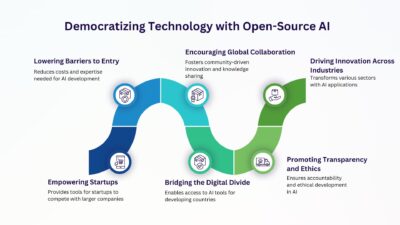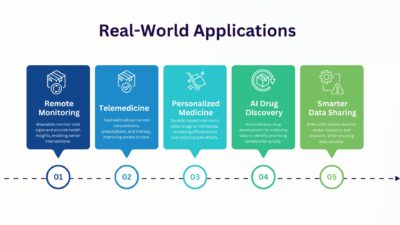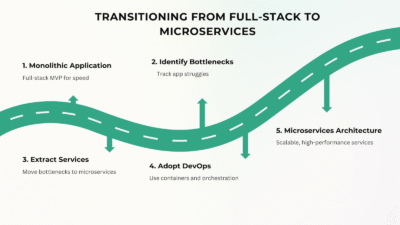Imagine a world where your laptop, your smartphone, and even the giant servers powering the internet all run in harmony with the planet. No toxic emissions. No wasted energy. Just smart, sustainable innovation. Sounds like science fiction? Not anymore.
Welcome to the world of clean technology and green computing—two powerful forces reshaping how we live, work, and take care of the Earth. But what do these terms actually mean, and why should they matter to you? Let’s dive in.
What Is Clean Technology?
In simple terms, clean technology (clean tech) refers to any process, product, or service designed to reduce environmental impact. Think solar panels, wind turbines, electric cars, or water purification systems.
At its core, clean tech is about doing more with less—less pollution, less energy waste, and less damage to the planet.
Take solar panels, for example. Instead of relying on fossil fuels, they capture power directly from the sun. No greenhouse gases. No harmful emissions. Just renewable, eco-friendly energy.
Why Clean Tech Matters Now
Climate change isn’t a far-off threat—it’s happening today. Rising global temperatures, melting ice caps, and extreme weather events are clear warnings. And traditional energy sources are only making things worse.
Clean tech gives us a chance to change the story.
According to the International Renewable Energy Agency, renewable energy could supply nearly 90% of global electricity by 2050. That means drastically lower emissions, new opportunities for innovation, and millions of jobs in green industries.
And here’s the best part: investing in clean tech isn’t just good for the environment—it’s good for the economy too.
Enter Green Computing: The Digital Side of Sustainability
As our reliance on technology grows, so does our energy use. Every email sent, video streamed, or photo uploaded uses electricity. In fact, data centers alone account for about 1% of global electricity demand.
That’s where green computing comes in. It’s all about reducing the environmental footprint of our digital world by:
-
Designing energy-efficient hardware.
-
Creating smarter, less resource-hungry software.
-
Recycling and reusing devices instead of discarding them.
Imagine a typical office. By upgrading to efficient servers, using cloud-based solutions, and shutting down computers overnight, that office could save thousands of kilowatt-hours a year—the equivalent of taking several cars off the road.
Tech Giants Leading the Way
The good news is that major players in the tech industry are already on board.
-
Apple plans to be 100% carbon-neutral by 2030, covering not only its products but its entire supply chain.
-
Google has been carbon-neutral since 2007 and matches all its energy use with renewable power.
-
Microsoft and Amazon are investing billions into clean energy projects and sustainable tech initiatives.
For these companies, going green isn’t just about good PR—it’s about long-term survival in a changing world.
Everyday Green Computing
So, what does all this mean for you?
Green computing isn’t just for corporations—it starts with daily choices:
-
Use energy-efficient devices.
-
Turn off your computer when you’re not using it.
-
Practice digital minimalism—delete unused apps and files to save energy.
-
Try eco-conscious tools, like search engines that plant trees (e.g., Ecosia).
Small habits add up. One person might save a little, but millions of people saving together make a massive impact.
AI and Smart Tech: The Next Frontier
Artificial intelligence (AI) is also driving greener innovation.
-
Smart thermostats learn your routines and adjust energy use automatically.
-
AI-powered smart grids balance electricity supply and demand in real time, reducing waste.
-
Agricultural AI sensors monitor soil and water levels, ensuring plants get exactly what they need—nothing more, nothing less.
By combining data with automation, AI is making energy use smarter and more sustainable across industries.
Challenges on the Road to Greener Tech
As exciting as all this is, sustainability doesn’t come without challenges:
-
E-waste piling up – Millions of devices end up in landfills every year, leaking toxins into the environment.
-
Dirty manufacturing—Rare mineral mining often harms ecosystems and communities.
-
Energy-hungry data centers – The digital cloud consumes vast amounts of power and water.
-
Throwaway culture—Gadgets are designed for quick upgrades instead of long-term repair.
-
Weak recycling systems—Many regions lack infrastructure to handle e-waste responsibly.
-
Greenwashing—Some brands claim to be eco-friendly without making meaningful changes.
-
Carbon-heavy supply chains—Shipping, packaging, and delivery add hidden emissions.
-
High costs—Sustainable production can be expensive, slowing widespread adoption.
-
Lack of awareness—Everyday tech habits like streaming or constant charging often go unnoticed as environmental stressors.
How You Can Be Part of the Solution
The clean tech movement isn’t limited to scientists or big corporations—everyone can contribute. Here’s how:
-
Upgrade wisely:Don’t replace devices unless necessary; choose brands with strong sustainability commitments.
-
Recycle responsibly: Look for certified e-waste recycling programs.
-
Switch to green energy: If your electricity provider offers renewable options, make the switch.
-
Go paperless: Use digital tools to cut down on paper waste.
-
Spread awareness: Encourage friends and family to adopt green computing habits.
A Greener Future Ahead
Clean tech and green computing aren’t passing trends—they’re vital steps toward a sustainable future. From solar panels on rooftops to the devices in our hands, we now have the tools to protect the planet while still moving forward.
The choices we make today—what we buy, how we use our devices, and how we dispose of them—will shape the world for generations to come.
The good news? Progress and preservation don’t have to be at odds. With innovation, awareness, and collective action, we can build a digital world that works for both people and the planet.
So the next time you power up your laptop or scroll through your phone, remember: you’re not just using technology—you’re shaping the future.
Final Thought: Clean tech and green computing might sound like technical terms, but they’re really about making life better for everyone. Every click, every watt, and every byte counts.



